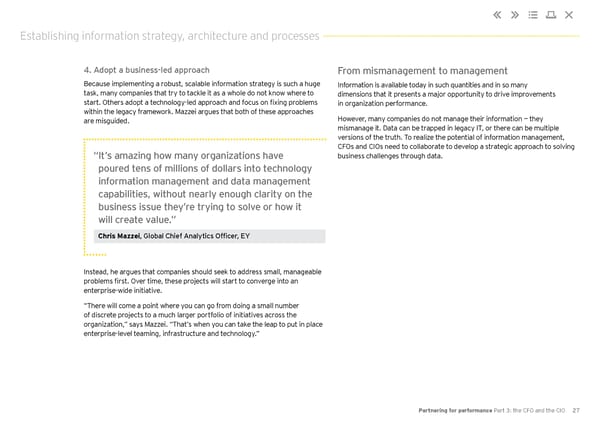Establishing information strategy, architecture and processes 4. Adopt a business-led approach From mismanagement to management Because implementing a robust, scalable information strategy is such a huge Information is available today in such quantities and in so many task, many companies that try to tackle it as a whole do not know where to dimensions that it presents a major opportunity to drive improvements start. Others adopt a technology-led approach and focus on fixing problems in organization performance. within the legacy framework. Mazzei argues that both of these approaches are misguided. However, many companies do not manage their information — they mismanage it. Data can be trapped in legacy IT, or there can be multiple versions of the truth. To realize the potential of information management, CFOs and CIOs need to collaborate to develop a strategic approach to solving “ It’s amazing how many organizations have business challenges through data. poured tens of millions of dollars into technology information management and data management capabilities, without nearly enough clarity on the business issue they’re trying to solve or how it will create value.” Chris Mazzei, Global Chief Analytics Officer, EY Instead, he argues that companies should seek to address small, manageable problems first. Over time, these projects will start to converge into an enterprise-wide initiative. “There will come a point where you can go from doing a small number of discrete projects to a much larger portfolio of initiatives across the organization,” says Mazzei. “That’s when you can take the leap to put in place enterprise-level teaming, infrastructure and technology.” Partnering for performance Part 3: the CFO and the CIO 27
 Partnering for Performance Part 3 Page 26 Page 28
Partnering for Performance Part 3 Page 26 Page 28